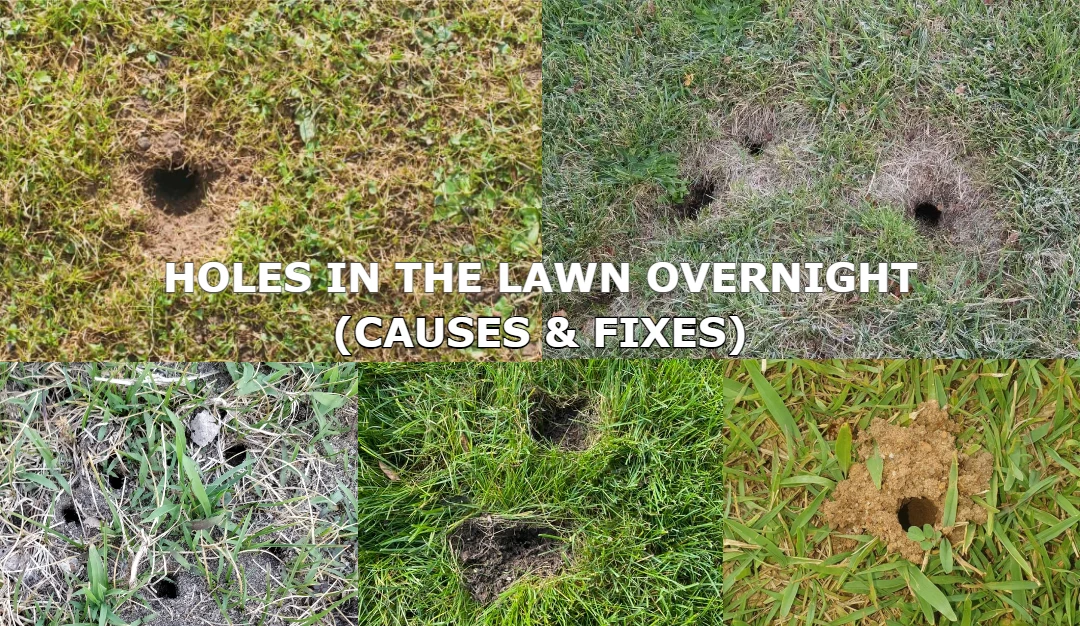It’s the middle of summer and you are spending the time of your life having evening barbeques and lawn parties. But wait! You see small holes in your lawn that seems to appear overnight and you’re not sure what’s going on.
Every year, countless homeowners find themselves scratching their heads over this mystery; what causes small holes in lawn overnight? Is it some insects, rats, moles, or some natural phenomenon? Today, we’re going to get to the bottom of it.
In this blog post, we’ll explore the most likely causes of those pesky holes. So pour yourself a cup of coffee, grab a seat, and let’s get started!
What is making holes in your yard
If you’ve ever found small holes in your yard that seem to appear overnight, there are multiple possibilities for that. Let’s explore each possibility one by one:
Grubs
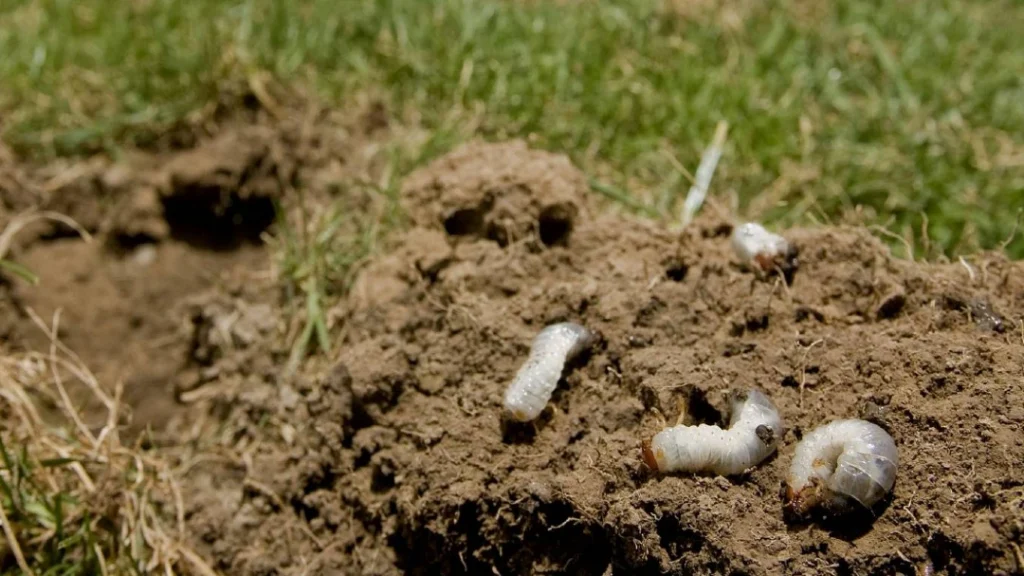
They are nasty and they are annoying. Yes, you guessed it right, those are Grubs. These small larvae of beetles might be the reason for small holes in your garden. They live in parts of the soil where they can eat grass. So if you have added new grass patches in your garden or/and notice damaged grass, then check for grubs.
One other way of telling if your garden has grubs is by checking if there are birds or animals digging around the roots in your garden. These birds are looking for food which is surely the grubs.
There are various products to use to get rid of grubs, just make sure you know when to apply the grub control.
Insects
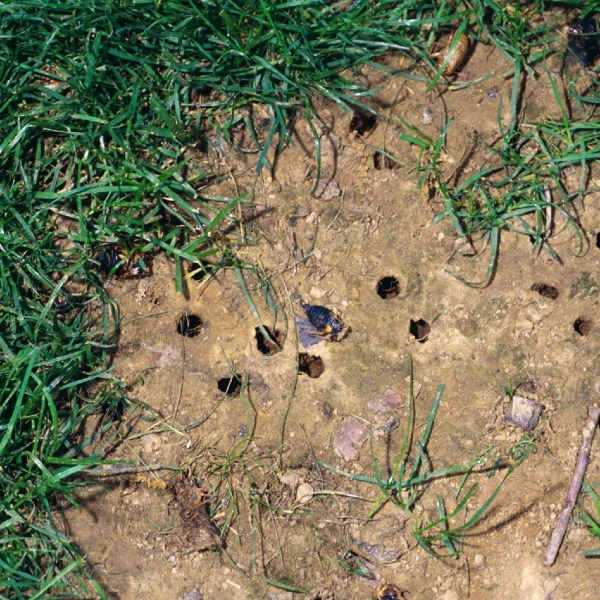
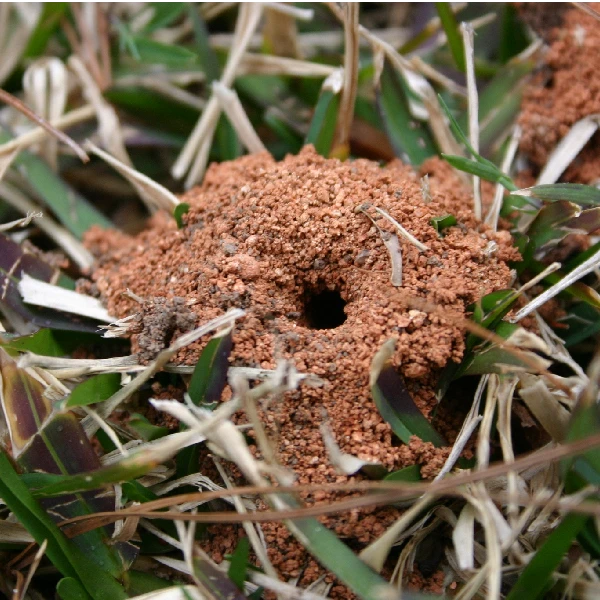
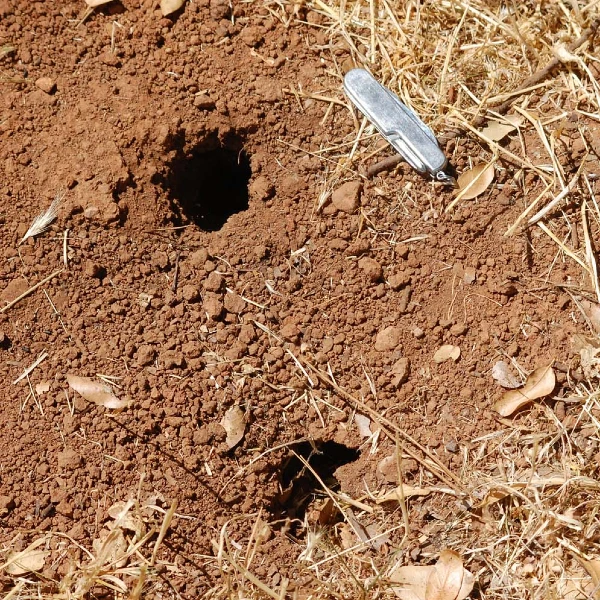
Insects can also cause small and shallow holes in the ground. Digger bees, for example, excavate tunnels for nesting purposes, while cicada killer wasps may build underground nests made out of the mud.
Some insects, like termites, may bore into the woody roots of plants to make their homes. Other soil-dwelling insects, like grubs and beetles, may eat the roots of grasses and other plants, causing the plants to die and leaving behind bare patches of dirt. Any of these small insects may be what causes small round holes in the lawn overnight.
Earthworms also leave small holes in your lawn but these earthworms are beneficial for your lawn. So, before you treat your lawn to kill harmful insects, make sure to inspect earthworm holes because you wouldn’t want to kill those friendly fellas.
Note that some insects are actually beneficial to your lawn.
Moles
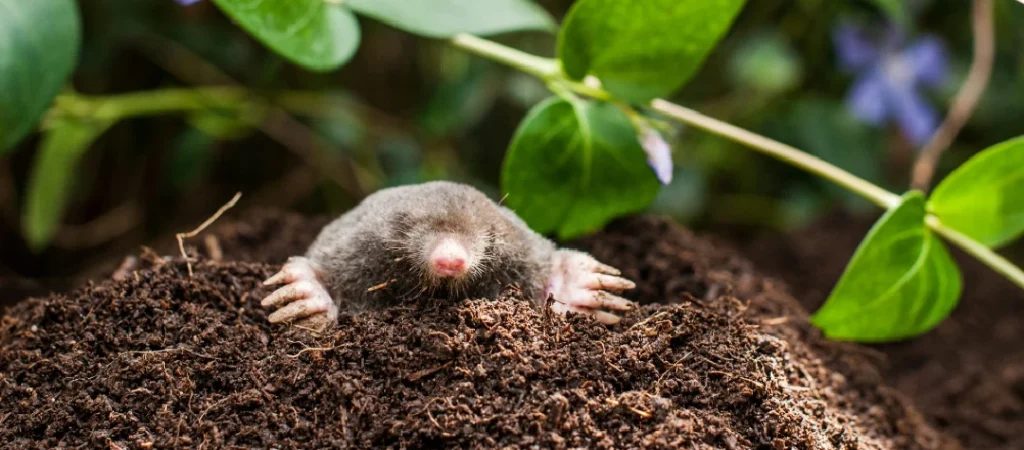
Moles are small, brown animals that live underground and eat earthworms and other insects. They dig holes and tunnels and leave mole holes in your yard as they search for food. If the holes are at least 10 inches deep in the ground and look like raised volcano-shaped swellings, then you definitely have mole holes in your yard.
Pets
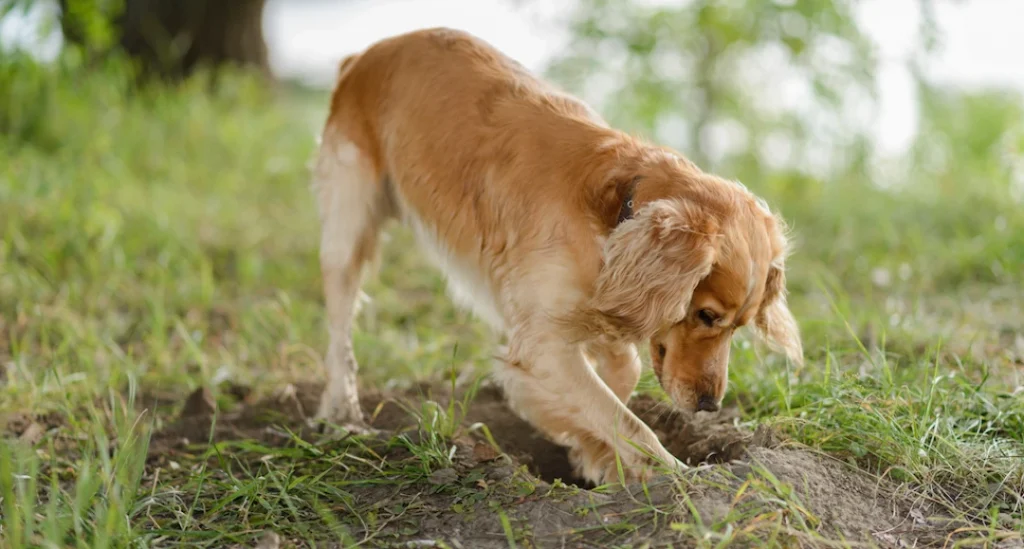
It is also possible that your pet is responsible for the damage. Dogs love to dig holes in the soil as a play or sometimes, to cool off their paws during the summer season. If you see small and irregular patches of scratched soil, it is most probably caused by your dog.
Gophers
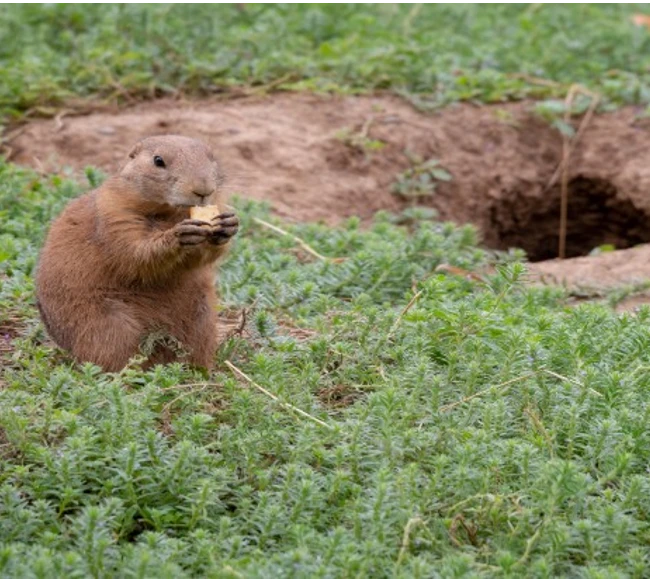

Guess what? Moles have cousins and those are gophers. Well, not really cousins but gophers are very similar to moles. Gophers are also small and brown and live underground.
Chipmunks and squirrels may also be to blame, as they often make small holes in the ground. Eastern gray squirrels, for example, dig holes to store food, and chipmunks dig holes to rest and sleep.
One difference is that they are larger than moles and eat plants rather than underground insects. They can also create small holes and tunnels in your yard as they search for food.
Rabbits
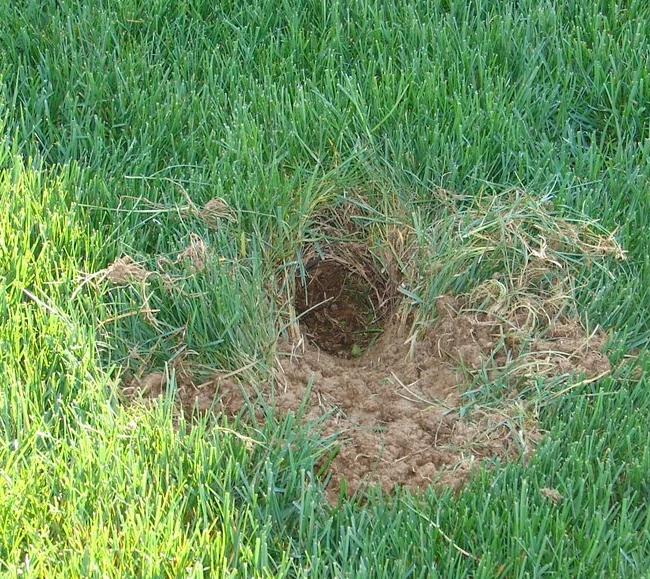


Rabbits dig small holes in lawns and might be the reason you’re experiencing an issue with holes in your own lawn.
If you have rabbits, chances are that they are the reason for holes in your lawn. And they don’t do it just for fun. Rabbits use holes as a way to stay safe from other animals, sleep, and give birth. So make sure the holes are empty if you decide to fill the holes!
Voles
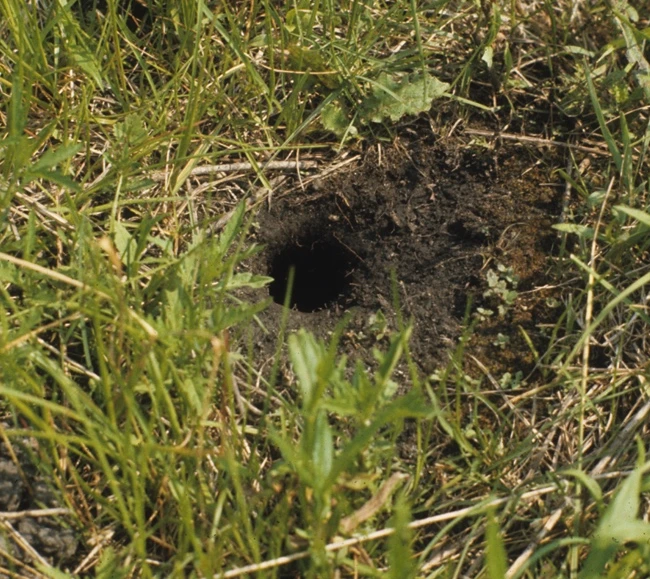

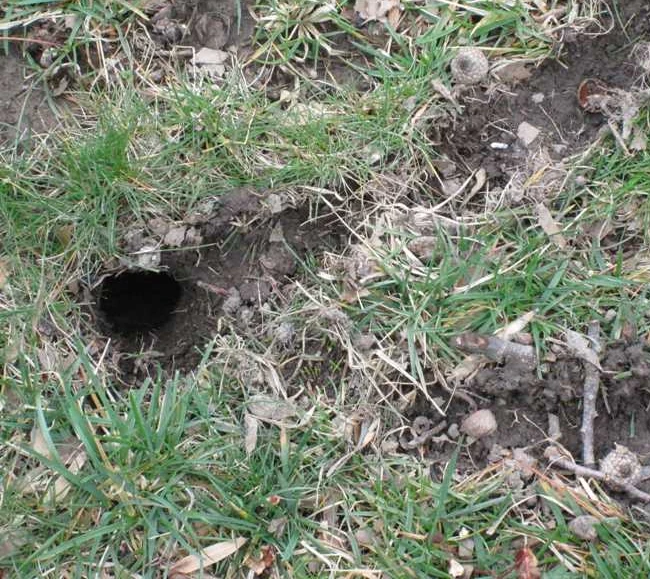
One possibility is that voles, small rodents that resemble mice, are burrowing in the ground. Voles are known to create tunnels called “vole holes” under snow cover in search of food, and they can also cause damage to lawns by eating roots and bulbs.
Armadillos and birds
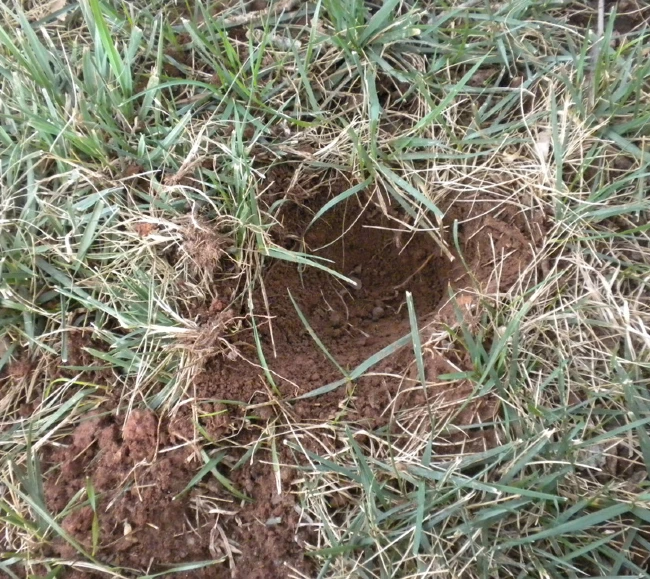


As we mentioned earlier, grubs and ants attract birds and other small animals but since these insects live underground, birds and armadillos have to dig the soil surface to get to those insects.
So, birds and small animals might be the indirect cause (while grubs still being the primary ones) of small holes in your lawn.
Rats
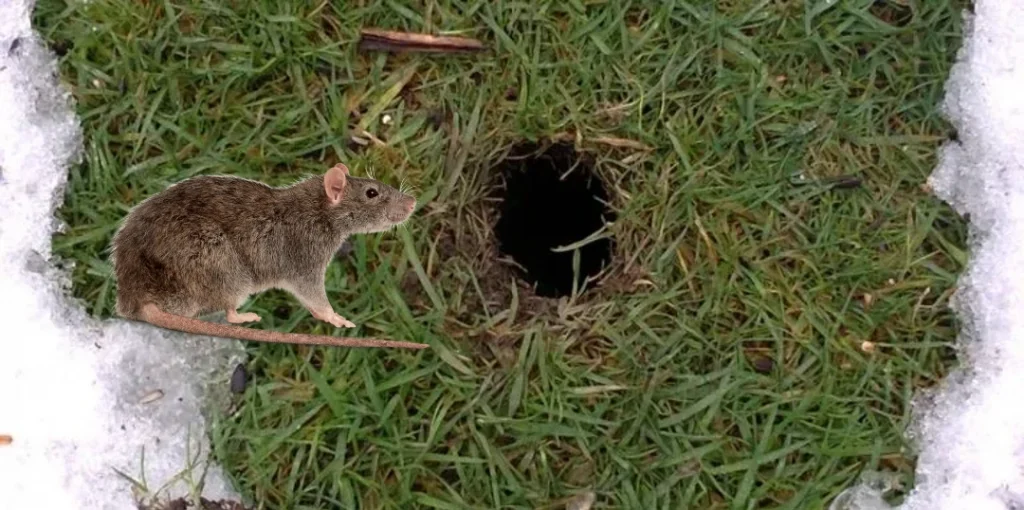
Another possibility is that rats are responsible for the holes. Rats are larger than voles, and they can be very destructive, so it’s important to take steps to control them by using natural rat repellent such as crushed red pepper, and peppermint oil, if you suspect they’re present on your property, leaving rat holes.
Snake Holes
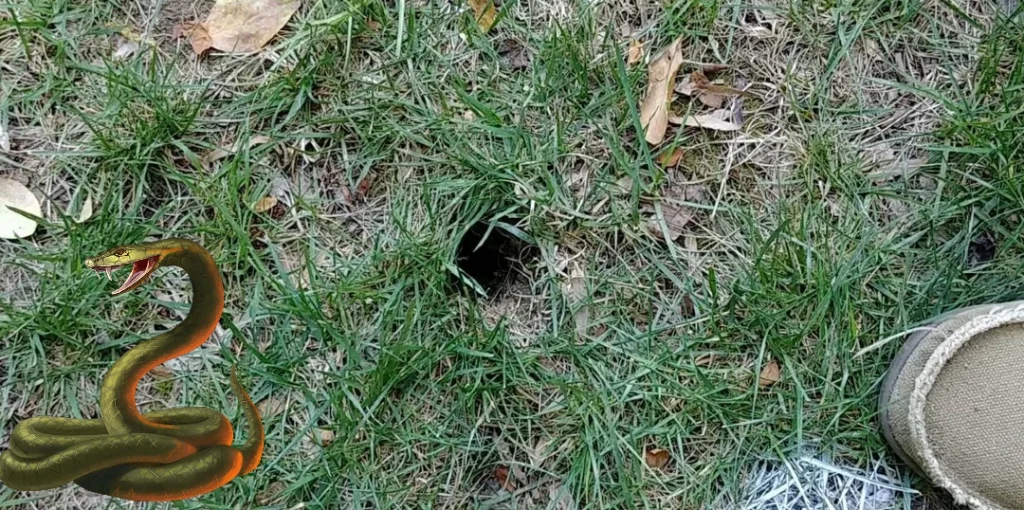
To identify snake holes in the lawn or backyard, look for small depressions in the ground that are roughly the width of a garden hose. These depressions will usually have a smooth, rounded edge and will be free of debris. If you see a hole that meets these criteria, it is likely a snake hole.
Types of Holes in the Yard
Holes in the yard can be alarming or can be simply because of pets. But which one is it and how to tell the difference?
Whether you’ve got small holes in the yard or bigger ones, it is important to diagnose them. Here’s how to do it:
Burrows
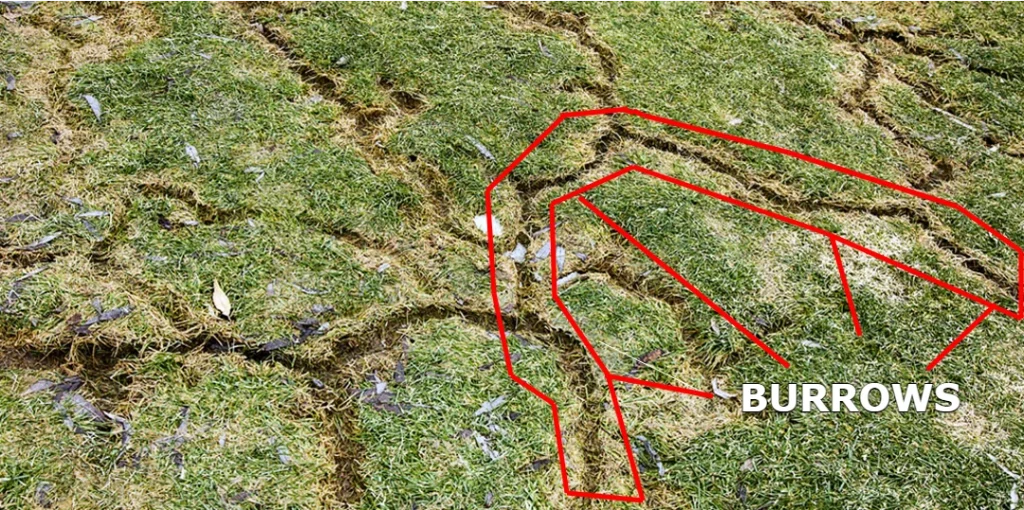
Burrows are long, narrow tunnels that animals create as they travel underground. Mice, voles, snakes, and other small creatures are known to dig burrows. These holes are typically an inch or two in diameter and may have smooth walls. If you see a hole with fresh dirt around it, that’s a good indication that an animal is still using the burrow.
Mounds

Mounds of dirt or grass are another common type of hole you might find in your yard. These are created when an animal digs into the ground in search of food or shelter. Moles and gophers are the most common culprits. Mounds can vary in size, but they’re usually no more than a few inches high.
Divots
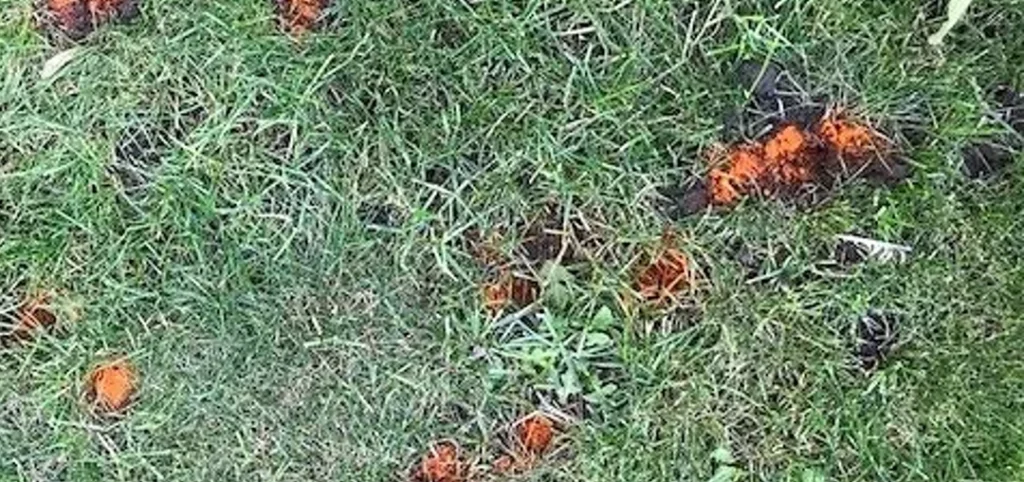
Divots are small chunks of grass or dirt that have been pulled up from the ground. They’re often caused by animals digging holes in the yard, but they can also be the result of bad weather or lawnmowers.
While divots may not seem like a big deal, they can actually have a significant impact on the health of your lawn. When a divot occurs, it exposes the underlying soil to the air and sun. This can cause the soil to dry out and become compacted, making it difficult for grassroots to take hold.
How To Tell The Difference
Now that you know the three main types of holes you might find in your yard, let’s talk about how to tell them apart. Here are some key things to look for:
- Burrows are typically longer and narrower than mounds. They tend to be straight, with smooth walls and a round opening. Gophers usually create burrows that are 2-3 inches in diameter, while moles prefer ones that are 4-6 inches wide.
- Mounds are larger and more rounded than burrows. They often have rough, uneven sides, and the opening is usually smaller than the rest of the mound. Moles typically create mounds that are 6-12 inches in diameter, while gophers tend to make smaller ones that are 3-6 inches wide.
- Divots can range in size from a few inches to several feet, and they can be very difficult to repair. If not repaired properly, divots can lead to serious damage to your lawn.
If you find any of these holes in your yard, it’s likely that you have a gopher or mole problem. To confirm this, you can try to find the animals themselves. Gophers are typically brown or black, while moles are usually gray or black. You may also be able to see tracks leading into and out of the holes.
Identifying Holes per Time of Year
As the weather changes, so do the appearance of your lawn. Different seasons bring different challenges, and it’s important to be able to identify these challenges in order to address them properly. One way to do this is by knowing what kind of holes should be appearing on your lawn and when.
1. Spring and Summer Time Holes
In the spring, small holes and craters might appear on your lawn as a result of a frost heave. This happens when water in the soil freezes and expands, causing the ground to rise and then settle back down as the ice melts. These craters will usually disappear on their own as the weather warms up.
In the summer, you might start to see ant hills or molehills popping up. These are generally harmless, although they can be unsightly. If you’re concerned about them, you can try to discourage the pests by filling in their holes with dirt or mulch.
2. Fall Time Holes
In the fall, you might see some small depressions in your lawn caused by grubs. These larvae feed on the roots of grass, causing the grass to die and creating a small hole in the process. You can treat grubs with insecticide, but it’s generally best to wait until they’ve gone through their life cycle and turned into adult beetles, which don’t pose a threat to your lawn.
Finally, in the winter, you might see some large craters appearing. These are usually caused by animals digging holes for food or shelter.
Filling Holes In The Lawn
No one likes to find a hole in their backyard. Whether it’s the result of wild animals, pets, or lawn mowing mistakes, dealing with holes can be a pain. But fear not! There are a few simple steps you can follow to fill them back in.
First, take a look at the size of the hole. If it is caused by insects, spray the soil to kill the harmful insects and then add a new layer of soil on top. In case it is caused by small rodents and animals, then shoo away the animals and use natural remedies to repel those animals from your lawn.
If the holes are caused by lawn mowing mistakes, then let the grass grow in your lawn and then cut the overgrown grass softly to make your lawn appear full and to hide the holes.
How to fill holes in the lawn: Step-by-Step
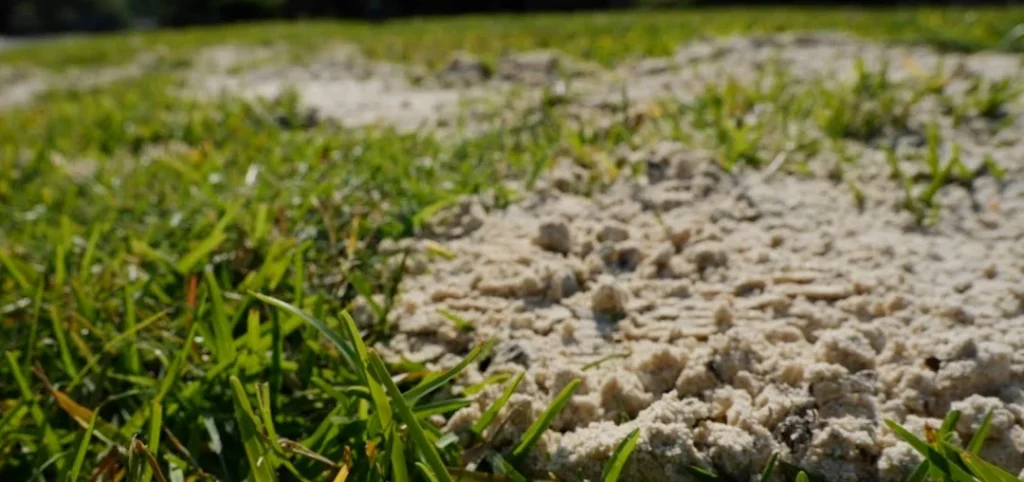
Once you’ve gathered your materials, it’s time to start filling!
Here is how to do it:
- The first step is to remove any debris from the hole, including rocks, sticks, and leaves.
- Once the hole is clear, add a layer of gravel. This will help with drainage and prevent the hole from collapsing.
- Next, add a layer of sand. This will help to fill any remaining gaps and create a level surface.
- Finally, top off the hole with topsoil. Be sure to pack it down firmly so that it doesn’t erode away.
- Water the filled hole to help settle the material and prevent sinkholes from forming.
- Once the hole is filled, you can add grass seed and water it regularly until the grass grows back.
Filling holes in your backyard is a great way to improve the look of your yard and make it safer for children and pets to play.
Conclusion
So, what could be the causes of small holes in the lawn overnight? There are many possibilities, but some of the more common ones include moles, gophers, voles, and rabbits. If you’re not sure which of these creatures is causing the damage to your lawn, there are ways to tell.
Moles leave large piles of dirt on the surface as they tunnel underground; gophers create small hills around their entrance and exit points; voles eat plants and trees below ground level, and rabbits nibble grass blades close to the ground.
There are many potential causes, but we’ve highlighted some of the most common ones. If you’re experiencing this issue on your property, be sure to investigate and take corrective action as soon as possible. Doing so will help keep your lawn looking lush and healthy all year long!

